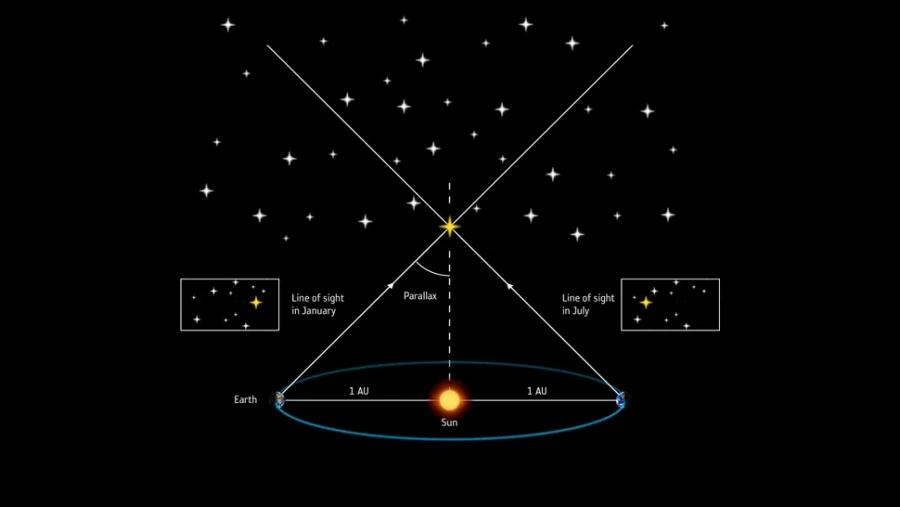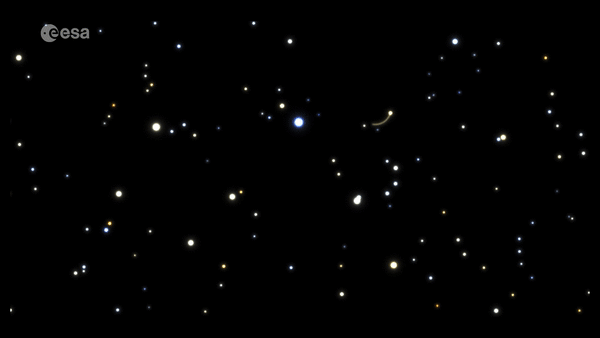Explore the World's Best Ideas
Join today and uncover 100+ curated journeys from 50+ topics. Unlock access to our mobile app with extensive features.
The Night Sky Isn't Two Dimensional
Parallax is the observed displacement of an object caused by the change of the observer's point of view. In astronomy, it is an irreplaceable tool for calculating distances of far away stars.
The night sky appears two-dimensional.
However, it took astronomers thousands of years to figure out how to measure distances of stars from our planet and create actual three-dimensional maps reflecting the distribution of stars and galaxies in the universe.
One of the key methods they use is the so-called parallax, which relies on the same effect as stereoscopic vision.
19
148 reads
Measuring Large Distances
When it comes to measuring distances to other stars, the orbit of Earth around the sun provides the baseline for these calculations.
Every six months, the planet changes its position with respect to the surrounding universe by 186 million miles (300 million kilometers). Since we are making this motion together with Earth, we can (theoretically) observe its effect as tiny circles that stars perform in the sky every year. Due to the vast distances to even the nearest stars, these circles are barely noticeable so detecting and measuring them is extremely difficult.
19
98 reads
The History of Parallax Measurements in Astronomy
The first known astronomical measurement using parallax didn't involve a star but the moon. The ancient Greek astronomer Hipparchus reportedly used observations of a solar eclipse from two different locations to calculate the distance of Earth's celestial companion.
In 1672, Italian astronomer Giovanni Cassini and his colleague Jean Richer made simultaneous observations of Mars, with Cassini in Paris and Richer in French Guiana. Cassini subsequently used those measurements to compute the parallax determining Mars' distance from Earth.
18
90 reads
Breakthrough in Parallax Measurements and Galaxy Mapping
A real breakthrough in parallax measurement and therefore in determining distances of stars in our galaxy, the Milky Way, came with a mission called Hipparchos, after the ancient Greek astronomer that first used the method to estimate the distance of the moon.
This mission, launched by ESA in 1989, measured the positions and parallaxes as well as proper motions for nearly 120,000 stars. The spacecraft orbited Earth for about four years, allowing astronomers to probe the neighbourhood of the sun up to the distance of 300 light-years with the accuracy of 0.001 arcseconds.
18
77 reads
2013: GAIA Telescope
In 2013, ESA launched a telescope called Gaia that charts the positions, parallaxes, and proper motions of more than one billion stars. That number represents only about 1% of the actual number of stars in the galaxy, but that's enough for astronomers to extrapolate the observations to understand how the Milky Way behaves as a whole.
Using Gaia data, they could, for the first time, create a dynamic movie of the galaxy's life over billions of years, uncovering past events but also projecting what will happen in the future.
18
64 reads
Learning From The Parallax Effect
The light is spread over an area four times larger, and it will be only one-fourth as bright as when the projector was half as far away. If you move the projector three times farther away, the light will cover 9 square feet and appear only one-ninth as bright.
If a star measured in this manner happens to be part of a distant cluster, we can assume that all of those stars are the same distance, and we can add them to the library of standard candles.
18
71 reads
Using Parallax for 3D Imaging
Another application of parallax is the reproduction and display of 3D images. The key is to capture 2D images of the subject from two slightly different angles, similar to the way human eyes do, and present them in such a way that each eye sees only one of the two images.
Virtual reality gaming headsets, such as the Oculus Rift and the HTC Vive, produce 3D virtual environments by projecting an image from a different viewing angle to each eye to simulate a parallax effect.
19
72 reads
IDEAS CURATED BY
CURATOR'S NOTE
How stars are measured.
“
Camille A.'s ideas are part of this journey:
Learn more about scienceandnature with this collection
Basic survival skills
How to prioritize needs in survival situations
How to adapt to extreme situations
Related collections
Similar ideas
Read & Learn
20x Faster
without
deepstash
with
deepstash
with
deepstash
Personalized microlearning
—
100+ Learning Journeys
—
Access to 200,000+ ideas
—
Access to the mobile app
—
Unlimited idea saving
—
—
Unlimited history
—
—
Unlimited listening to ideas
—
—
Downloading & offline access
—
—
Supercharge your mind with one idea per day
Enter your email and spend 1 minute every day to learn something new.
I agree to receive email updates







